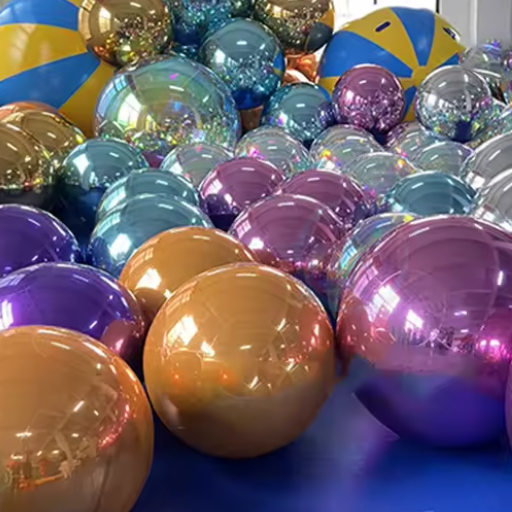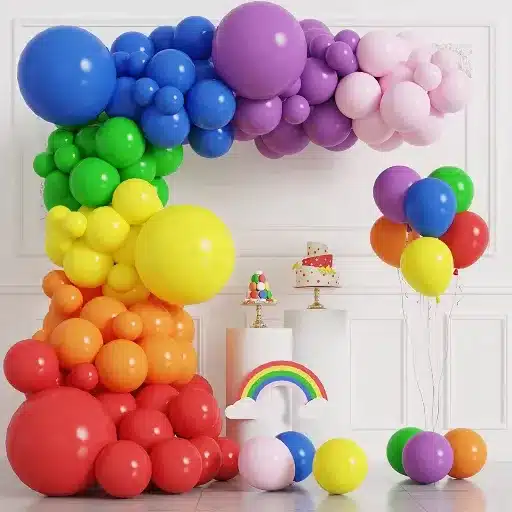Balloons are essentially a universal source of delight and color in various occasions like birthday parties, weddings, or even corporate events. However, one of the most frequently asked questions regarding balloon décor is, “How long do balloons last after inflation?” The lifespan of latex balloons, when understood, could help you plan your event with certainty, prevent last-minute disasters, and also make their presence felt to the fullest at the time of your celebration. This manual explores the factors that determine the floating period of latex balloons and provides effective guidance for getting the maximum benefit from your decoration. No matter if you are an event organizer or just a person who is going to celebrate a special day, this article is the most dependable source for ensuring that your balloons will be camera-ready for the whole event.
Introduction
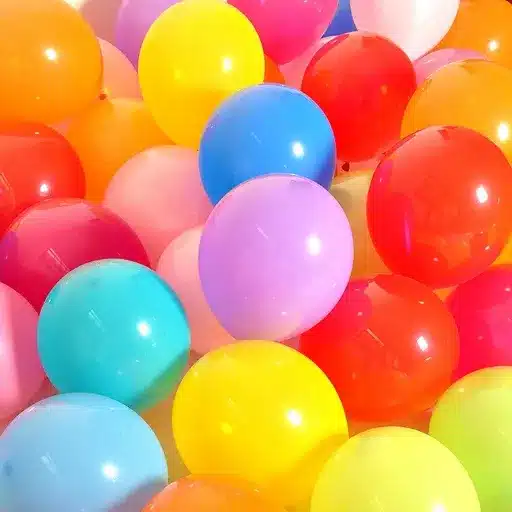
Comprehending the Process of Balloon Inflation
The time that latex balloons stay in the air and their lifetime mainly depend on the way they are inflated and the kind of gas or air used. Helium is the most popular gas for making the balloons float because of its property to be lighter than air. However, the typical duration for helium-filled latex balloons to stay in the air is only 8 to 12 hours. This will vary according to different factors like the size of the balloon, the weather conditions and the quality of the latex.
If someone uses a larger balloon like an 18-inch one or a bigger size, they can also float the balloon for about 18 to 24 hours since big balloons will need more helium and thus, the rate of seepage will slow down. Besides that, there is a product named Hi-Float, which is a liquid solution that gets applied on the inside of the balloon. It can really prolong the float time, even up to several days in some instances, as it creates a barrier that prevents the helium from coming out quickly.
Factors Affecting Balloon Inflation Duration
Several factors come into play when it comes to the duration of the balloon inflation the most important ones being the size of the balloon, the quality of the materials used, and the environmental conditions. In addition to that, bigger balloons and treatments like Hi-Float can certainly prolong the floating time by minimizing the loss of helium.
Environmental Factors Affecting Balloon Inflation Duration
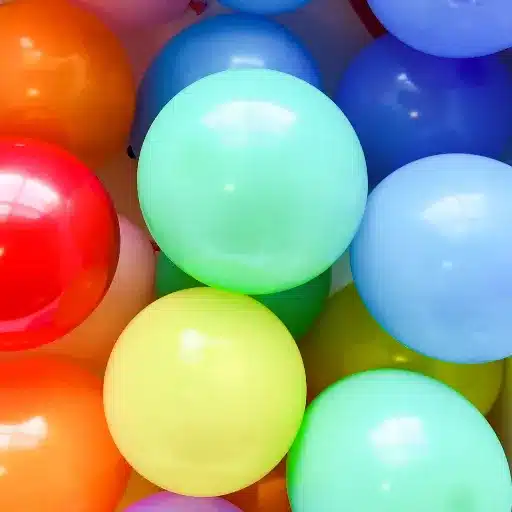
🌡️ Temperature
The use of extreme heat reap the molecules of helium and air thus causing them to expand the balloon may eventually break or the reversed effect may occur in the case of the cold which causes contraction making balloons look deflated. The results of some studies suggest that latex balloons can stay for a longer period in a temperature range of 68°F to 77°F (20°C to 25°C) as this is the condition when there is neither too much stress on the material nor there is any instability.
💧 Humidity
High humidity can harm latex balloons’ life span since moisture is very much of an interference with the material’s elasticity. On the contrary, very dry atmosphere can suck out the moisture from the balloons and lead to faster popping. Hence, it is recommended to keep indoors humidity at about 50% for the sake of their longevity.
☀️ Direct Sunlight
The ultraviolet rays (UV) are extremely harmful for the latex balloons as they weaken the material and thus lead to early deflation. It has been found that balloons subjected to direct sunlight can burst within a few hours max while those that are kept in dim or indoor spots can last for days.
Material Durability of Balloons
There is a big difference in the durabilities of balloons according to their materials. Latex balloons which are compostable, plant-based, and rubber-derived typically remain inflated for 8 to 12 hours if they are filled with helium. However, the time can be increased to 3-5 days if the use of air is preferred and ideal indoor conditions are maintained with the balloon being kept away from light and heat. Conversely, foil balloons which are also referred to as Mylar balloons and are made from metallic plastic materials tend to have exceptionally low permeability compared to that of latex balloons. This, in turn, results in a long duration for helium retention, which could be days or even weeks, depending on the balloon size. In the light of the recent findings, foil balloons are acknowledged to survive in a helium-filled state for around 3-5 days and frequently remaining partially inflated for about four weeks if carefully handled.
Apart from the environmental factors, their impact on the balloon’s lifetime can be significant too. According to the research, one of the major environmental factors is UV light from sunlight which decays the balloons, with latex balloons being the most affected ones that get destroyed very quickly if exposed to sunlight for even a short time. For instance, a study has demonstrated that the outdoors condition of sun exposure would lead to the deflation of latex balloons within a day, with the time loss estimated to be about 1-3 hours. On the contrary, Mylar balloons are known to have high resistance against UV rays and as a result, they can last longer outside without losing their structural integrity.
Types of Balloons and Their Longevity

I guess the life of balloons is mostly determined by their material. Latex balloons get damaged pretty quickly when exposed to UV light and usually last only 1-3 hours if placed directly in the sun. However, Mylar balloons are a lot more durable when it comes to UV light, which allows them to keep their shape for a much longer time in outdoor conditions.
| Balloon Type | Helium Duration | Air Duration | UV Resistance |
|---|---|---|---|
| Latex (Indoor) | 12-24 hours | 3-5 days | Low |
| Latex (Outdoor) | 4-6 hours | 1-3 hours | Very Low |
| Foil/Mylar | 3-5 days (up to 4 weeks) | Several weeks | High |
Latex Balloons
Latex balloons are one of the most common types of balloons used for events because they are cheap, versatile, and environmentally friendly. The fact that these balloons are made from natural latex, which is a biodegradable material coming from rubber trees, means that they can eventually decompose under suitable environmental conditions. Still, their durability is affected a lot by sunlight, heat, and humidity, among other factors.
If the balloons are used indoors, a helium-filled latex balloon would usually last 12 to 24 hours before it becomes unfit for use, whereas an air-filled one can last up to several days. Using them outdoors is a real test for the balloons’ durability, though. Sunlight and heat cause the balloons to oxidize, which in turn affects their color and strength. A helium-filled latex balloon could last only 4-6 hours if it was under strong sunlight.
Foil (Mylar) Balloons
Foil balloons or Mylar balloons are made from a thin plastic sheet that is metallically coated, which gives them a glimmering and lustrous surface. The main reason for the popularity of these balloons is the fact that they can hold helium for longer than latex balloons, which they often do so for several days or even weeks in good conditions. The durability then becomes an ideal trait for events such as children’s parties, weddings, and corporate parties where long-lasting decor is a priority.
The broad range of designs and shapes, including custom prints, characters, and messages, is one of the characteristics of foil balloons making them very versatile and customizable. Besides, foil balloons are less prone to bursting than latex ones, thereby presenting a safer and more dependable option for some occasions.
Inflation Prolongation Tips

The first thing I do to prolong inflation is to make sure the foil balloons are well-sealed, and that they are not within the reach of sharp objects and areas with extreme heat or cold. Moreover, I keep them in a place with cool and dry conditions whenever they are not in use, which helps to improve their quality for next time.
Correct Storing Methods
Storing balloons the right way is a must to keep up with their quality and prolong their usability, especially for events or long-lasting need. The specific environment for both latex and foil balloons prevents their early degradation or damage. High temperatures, direct sunlight, and rough handling are some of the recent mentioned factors that can greatly lessen the lifecycle of balloons.
For latex balloons that are biodegradable and naturally less impermeable, the best way is to store them in a cool, dark, and dry environment. Surveys tell us that latex wears off very fast in the presence of UV light, heat, and humidity, finally becoming either brittle or sticky. The ideal storage temps are 68°F to 72°F (20°C to 22°C) which prevent the material from either softening or hardening. The use of air-tight containers adds extra protection by minimizing exposure to moisture and dust.
Using Balloon Treatments to Improve Longevity and Performance
Balloon treatments, like hi-float or sealants, have been recognized as extremely effective in prolonging both the float time and the durability of helium-filled latex balloons. These water-soluble solutions form an internal coating of the balloon that acts as a barrier to slow down the escape of helium molecules. For instance, as reported by studies and industry reports, untreated helium-filled latex balloons usually have a floating time of 12-24 hours in normal conditions. On the other hand, balloons treated with hi-float can have their float times extended to a few days—averaging 3 to 5 days depending on external conditions like temperature and humidity.
Not only that, but the development of balloon treatments has also reduced the waiting time for inflation which compounds the hassle of preparation for large events. Studies indicate that the balloons treated not only possess the ability of improved helium retention but also show increased tolerance against environmental threats like UV light or tiny abrasions. Thus, the outdoor events will be a good scenario where treated balloons can be used since the untreated ones will suffer a quick deflation due to the hot winds, etc.
Conclusion
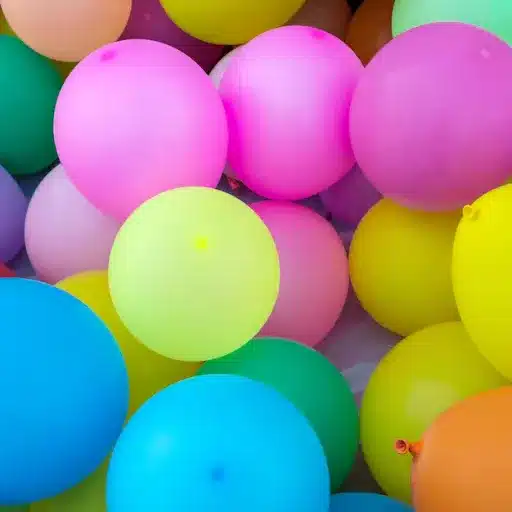
Final Thoughts on Balloon Longevity
Balloon longevity is an ongoing challenge that keeps changing with the new data and methods, giving rise to the economic and environmental benefits. One of the studies indicates that the latex balloons if treated with the right method, can be stored in a dry and cool place and still have as much as 30% more elacticity during the period of usage thus minimizing the breakage of balloons. On the other hand researchers have made use of modern materials and novel sealing techniques to stretch the float time of helium-filled balloons by as much as 48 hours, but it all depends on environmental conditions.
Besides, the creation of biodegradable balloon materials is another factor that pushes the balloon industry in an eco-friendly direction. A recent review notes that some of today’s latex balloons are on par with an oak leaf in terms of composting, and that they will definitely be a better option for the decorators and event organizers who care about Mother Nature. These discoveries will be a part of the daily morning practices in this field. The professionals already have to be updated with the latest studies to get the best out of their materials and the treatments. The longevity of balloons can be used combined with good techniques to help in the areas of generating an event and lessening the environmental impact.
Encouragement to Apply Sustainable Practices
The event management and decoration professionals are making a plea for the use of such earth-friendly practices and ultra-modern methods that the potential of both excellent performance and eco-friendliness is unlocked to the maximum. Continuous research is paving the way to biodegradable or natural materials adoption. For instance, the 2023 bioplastics study by Allied Market Research placed the global biodegradable plastic market at $7.4 billion by 2027—a staggering compound annual growth rate (CAGR) of 9.9%. The ER is coming up this rapid way into the enlightening and environmentally friendly side of Plastics. Thus, it is the right time for the event organizers to grab this opportunity and take their place in the eco-friendly market by being responsible and competitive.
Along the same lines letting PH e-balloon last longer by being kept in cool and dry places or using eco-friendly sealants is a win-win situation as far as practical and effective. An Environmental Materials Institute study reveals that proper storage can boost the lifespan of certain latex products by up to 30%. Thus, if those practitioners incorporate these truths into their operations, the quality of their events will be enhanced and they will also sync with the trends in the industry that are placing a premium on sustainable development. Get on the bandwagon of these scientifically based practices today to create an impact that is not only in the event industry but also beyond, the impact being the reversal of the dusty past on the matter of environmental management.
Reference Sources
-
Chaoee.com
- Article: How long latex balloons last with regular air
- This source provides detailed information on the longevity of air-filled latex balloons, mentioning that they can stay inflated for several days or even up to a week.
-
Facebook Balloon Decorators Group
- Post: How many hours will balloons stay inflated without hi-float
- A community-driven discussion where professionals share their experiences and recommendations for balloon inflation durations, including tips for specific brands and sizes.
-
Balloon Time (Manufacturer Website)
- Website: Balloon Time Helium Tanks
- This manufacturer provides insights into the inflation duration of both helium and air-filled balloons, along with tips for maximizing their lifespan.
Frequently Asked Questions (FAQs)
❓ How long is the air in balloons?
The time for inflated balloons with air to stay fresh can differ enormously. The usual duration of balloons made of latex filled with air is 1 to 2 weeks, but the venting of air by the balloon can depend on size and the environment. Air-filled balloons lose their shape faster than helium balloons, which can radiate once the fire is out.
❓ What is the duration of air inside latex balloons?
The duration of the air inside latex balloons usually lasts by one to two weeks. If you do want to keep them, then try to store them in a cool, dark place away from sunlight as this can greatly influence the life of your balloons.
❓ What are the causes of deflation in balloons?
There are various factors in the environment that lead to fewer hours of balloons being inflated. The balloon may lose air at rates dependent on the temperature, humidity, and daylight coming in contact with it. Dark and cool places are the preferred locations for balloons since their life is becoming longer in such places.
❓ Are helium balloons superior to air ones in terms of lifespan?
Helium balloons are greater than air balloons in terms of keeping the helium longer in the balloon. Air-filled balloons can resist for about 1 to 2 weeks while helium balloons may survive and stay inflated for about 3 to 10 days, though eventually, helium does leak out thus reducing their flying power.
❓ Is there a link between balloon size, quality, and lifetime?
For sure, the size and quality of the balloon have a significant effect on the lifetime of the balloon. Bigger balloons might still be inflated longer since they can hold more compress air but quality balloons are the least feared to be punctured or squeezed to shape. You can always count on good-quality balloons to be around for a significantly longer period.
❓ What is the lasting time of my balloons when they are filled with air?
Expect your air-filled balloons to have a lifespan of about 1 to 2 weeks at the most. Although the longevity depends on, among others, the balloon’s exposure to elements and the material quality.
Ready to Make Your Event Spectacular?
Apply these expert tips to ensure your balloons stay vibrant and inflated throughout your entire event!

